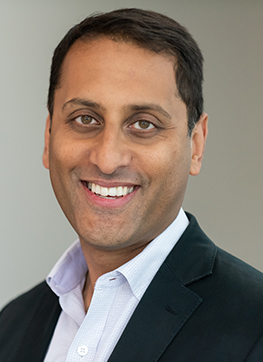LEXINGTON, Mass.– Fractyl Laboratories Inc. (Fractyl), a life sciences company dedicated to novel therapeutic interventions that can reverse the metabolic disease epidemic, today announced the publication of clinical results from the investigator-initiated INSPIRE clinical trial conducted in collaboration with Fractyl. The results demonstrate that a majority of patients with type 2 diabetes treated with a combination of Revita® DMR and a glucagon-like peptide-1 receptor agonist (GLP-1RA) were able to discontinue and remain off insulin therapy for 18 months after treatment. Additionally, all treated patients showed significant improvements in measures of glucose regulation and metabolic health.
“Eliminating the need for daily insulin could transform disease management for the hundreds of millions of people across the world suffering from type 2 diabetes. In this study, we found that combining one-time Revita DMR treatment with GLP-1RA medication could successfully eliminate insulin therapy for a majority of patients, whereas earlier studies of a GLP-1RA medication alone have not been able to demonstrate such findings1,” said Jacques Bergman, M.D., Ph.D., a professor of gastrointestinal endoscopy at Amsterdam UMC and principal investigator of the INSPIRE study. “The durable effect we’ve observed out to 18 months post-treatment is a promising indication that such an approach could provide lasting metabolic benefits.”
Revita DMR (duodenal mucosal resurfacing) is a first-in-class intervention designed to reverse insulin resistance and metabolic disease progression. The outpatient procedure uses heat to resurface the lining of the upper intestine. In the INSPIRE study, 16 insulin-treated patients with type 2 diabetes (T2D) underwent a single treatment with Revita DMR after which they ceased insulin therapy and began treatment with GLP-1RA and lifestyle counseling.
At six months after Revita DMR treatment, 11 out of 16 patients (69%) remained off insulin therapy with adequate glycemic control (i.e., HbA1c ≤7.5%). Of these, 8 out of 11 patients (73%) maintained durable insulin elimination through 18 months. Almost all subjects in the study were either off insulin entirely or on a reduced insulin dose compared to baseline at the 18-month follow-up. In addition, patients showed an average of 31% reduction in liver fat along with significant reductions in body weight. There were no procedure-related serious adverse events. The results were published in the peer-reviewed journal Gastrointestinal Endoscopy.
“We are encouraged by these very clinically meaningful results from the INSPIRE study, showing that a single treatment with Revita DMR in combination with GLP-1RA medication can replace insulin therapy for more than half of individuals with type 2 diabetes,” said Juan Carlos Lopez-Talavera, M.D., Ph.D., Fractyl’s Chief Medical Officer. “The standard of care for patients on insulin is to keep escalating insulin dose just to maintain glucose control as T2D progresses. This does not slow disease progression, and it brings side effects including hypoglycemia, weight gain, and other risks. Revita DMR may present an alternative that can help achieve glucose control while reducing or eliminating the need for insulin. Here we see just how effective and durable such an approach could be for patients who were otherwise exhausting their treatment options.”
“By some estimates, more than half of people with T2D who are treated with insulin still fail to adequately control their blood sugar2. These patients urgently need an alternative to insulin therapy,” said Harith Rajagopalan, M.D., Ph.D., co-founder and CEO of Fractyl. “Revita DMR is based on Fractyl’s revolutionary scientific insights surrounding the role of the gut in metabolic diseases. This study provides further support that targeting the gut with a single treatment of Revita DMR can transform metabolic health.”
Fractyl has initiated a pivotal study of Revita DMR in T2D. This landmark study, called Revita T2Di, is a prospective, randomized, double-blind, sham-controlled study enrolling 300 patients at up to 35 sites around the world.


